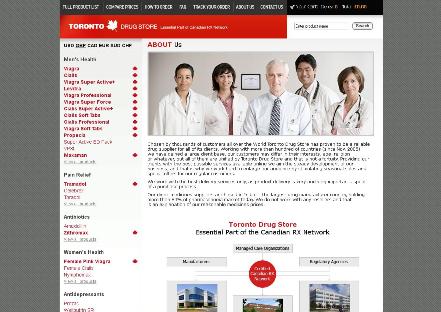How Keflex Treats Bacterial Infections Effectively
The Science Behind Keflex’s Powerful Antibiotic Action
Keflex, known generically as cephalexin, works by disrupting the formation of bacterial cell walls. By inhibiting a crucial enzyme involved in cell wall synthesis, it causes bacteria to lose their structural integrity. Without a sturdy cell wall, harmful bacteria become vulnerable and ultimately die, ending the infection.
This targeted approach allows Keflex to combat a wide range of bacteria while leaving human cells unharmed, as our cells lack these specific walls. It’s this selectivity that makes Keflex both powerful and safe when used appropriately.
Below, you’ll find a summary of Keflex’s mechanism of action:
| Aspect | Details |
|---|---|
| Target | Bacterial cell wall synthesis |
| Effect | Weakens and destroys bacteria |
| Impact on Human Cells | Minimal, due to lack of cell wall |
What Types of Bacterial Infections Keflex Treats

When facing common bacterial infections, many healthcare providers turn to keflex as a trusted solution. This medication is particularly effective against infections caused by susceptible strains of bacteria, making it a popular choice for treating skin and soft tissue infections, such as cellulitis and impetigo. Additionally, patients with uncomplicated urinary tract infections frequently find relief when prescribed keflex, due to its proven record of combating the bacteria most often responsible.
Keflex’s versatility doesn’t end there. Doctors also rely on it for respiratory tract infections, like strep throat and certain cases of bronchitis, especially when these illnesses are caused by bacteria susceptible to this cephalosporin antibiotic. Its safety and efficacy have made keflex a staple in outpatient medicine, offering reliable results for adults and children alike.
The range of infections that keflex can address exemplifies its broad impact in modern healthcare. When used as directed, it helps restore health and comfort, empowering patients to recover quickly and resume their daily routines. Ultimately, keflex plays an important role in battling some of the most frequently encountered bacterial threats.
How Keflex Targets Bacteria and Stops Infection
When you take keflex, it travels through your bloodstream to reach the source of infection. Once it locates the harmful bacteria, keflex interferes with the construction of their cell walls. Unlike viruses, bacteria rely on these strong cell walls to survive and multiply. This is where keflex shows its true power.
By preventing bacteria from properly building their walls, keflex causes them to weaken and eventually burst open. This targeted approach helps stop the infection right at its source. As a result, your immune system finds it easier to flush out the destroyed bacteria. This process is key to a quick and effective recovery.
Dosage Guidelines and Key Usage Recommendations

For many patients, taking keflex is as simple as swallowing a capsule with water, but timing and consistency matter. Doctors often prescribe keflex two to four times daily, depending on the infection’s severity. It’s crucial to complete the full course—stopping early, even if symptoms improve, can allow bacteria to remain and multiply. Avoid skipping doses, and take the medication at evenly spaced intervals to maintain stable levels in your bloodstream. For those with kidney issues, your healthcare provider may adjust the amount or frequency of keflex. Finally, always consult your doctor before making any changes or if you experience persistent side effects.
Common Side Effects and How to Manage Them
While most patients tolerate Keflex well, some may notice mild side effects as they begin treatment. The most frequently reported symptoms include nausea, diarrhea, and, occasionally, abdominal discomfort. It's also possible to experience mild skin rashes or itching, which usually subside as your body adjusts.
To minimize stomach issues, try taking Keflex with food and stay well hydrated. If diarrhea becomes persistent, or you detect any blood, it's crucial to contact your healthcare provider promptly. Allergic reactions, though rare, signal an emergency—watch for swelling, difficulty breathing, or severe hives.
Below is a helpful overview:
| Side Effect | When to Seek Help |
|---|---|
| Nausea, Diarrhea | If persistent or severe |
| Rash, Itching | If spreading or accompanied by fever |
| Allergic Reaction | Immediate medical attention |
Whenever you're uncertain, consulting with your doctor ensures your safety throughout the course of therapy.
Addressing Antibiotic Resistance: Keflex Best Practices
With the rising concern of antibiotic resistance worldwide, using Keflex wisely is essential to preserve its effectiveness for future generations. This means following your healthcare provider's instructions closely—never skipping doses, and always completing the full course of treatment, even if symptoms improve before you finish. These practices ensure that all harmful bacteria are eliminated, reducing the chance of surviving microbes developing resistance.
It’s equally important not to demand antibiotics like Keflex for viral infections such as colds or flu, where they have no effect. Only take Keflex when prescribed for a confirmed bacterial infection. By using antibiotics responsibly, patients help slow the global spread of resistant bacteria and protect the power of lifesaving medications for everyone. Responsible use is a critical step in maintaining the usefulness of Keflex in the years to come.



